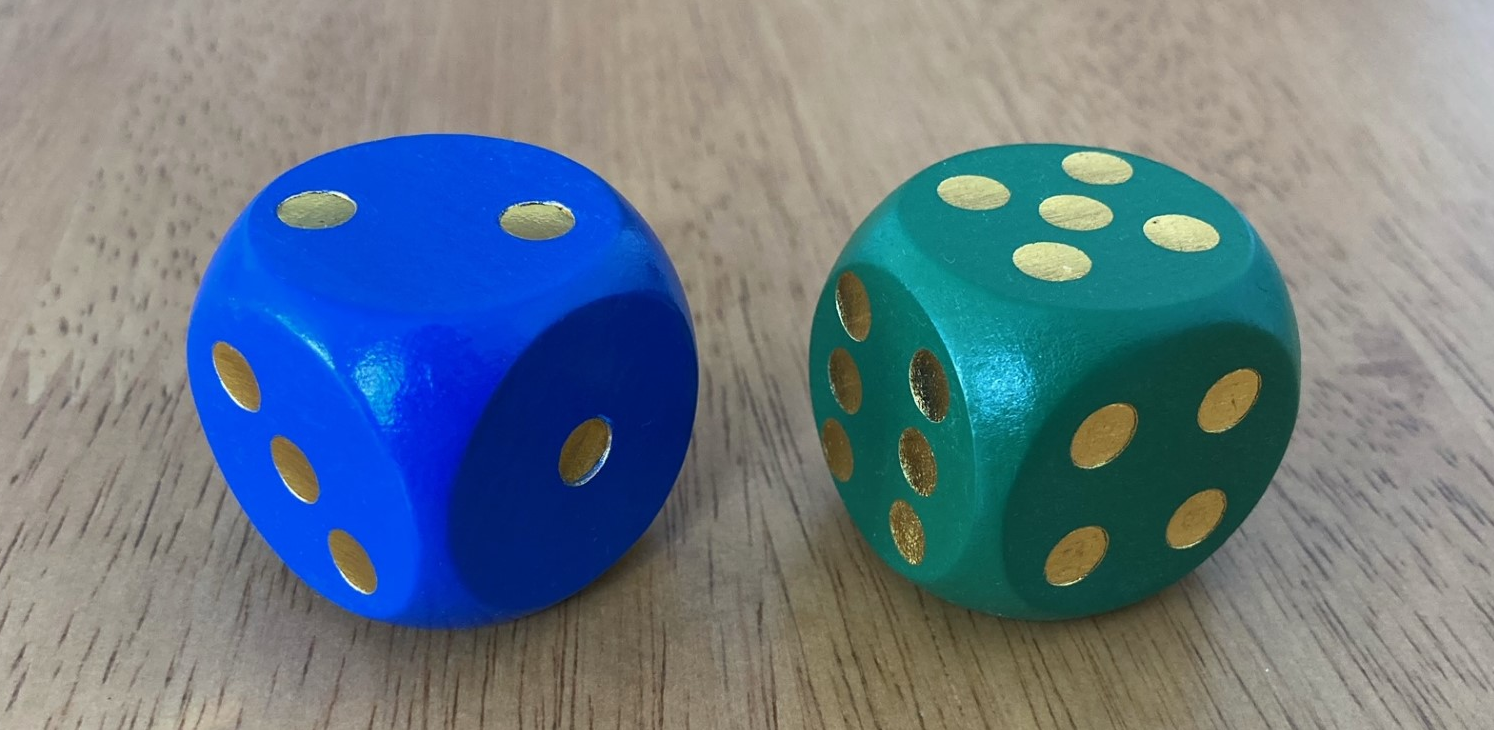Copyright © University of Cambridge. All rights reserved.
'Two Dice' printed from https://nrich.maths.org/
Show menu
Why do this problem?
This activity provides a valuable experience for younger pupils to explore some simple additions while finding all possibilities.
What children need to know to play this game
The children need to be able to roll two dice and identify their score.
Possible approach
You could support the children to collect their totals on the board. Ask them how they should be arranged and see if they can suggest a systematic way of recording their results. For example, they might start with all the totals that use a $1$. In this way, you can ask the class to talk about the patterns they notice and this will help to reveal any combinations that are missing.
Key questions
These questions have been phrased in ways that will help you to identify the children's prior knowledge about both the number concepts involved and the strategies and mathematical thinking needed to solve the problem.
What is the lowest total you could make?
If one dice shows $6$, what could the other dice be showing?
Possible extension
You could make use of more dice and/or dice with different numbers of faces. Alternatively, consider finding the difference between the two numbers or the product of the two numbers.
Possible support
Children who struggle with addition may count the dots to help them but encourage them to articulate the number sentence once they have done so. This will help them to build the visualisations of the numbers as dotty dice patterns which will support their learning of number bonds.
